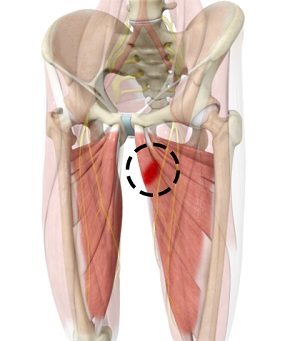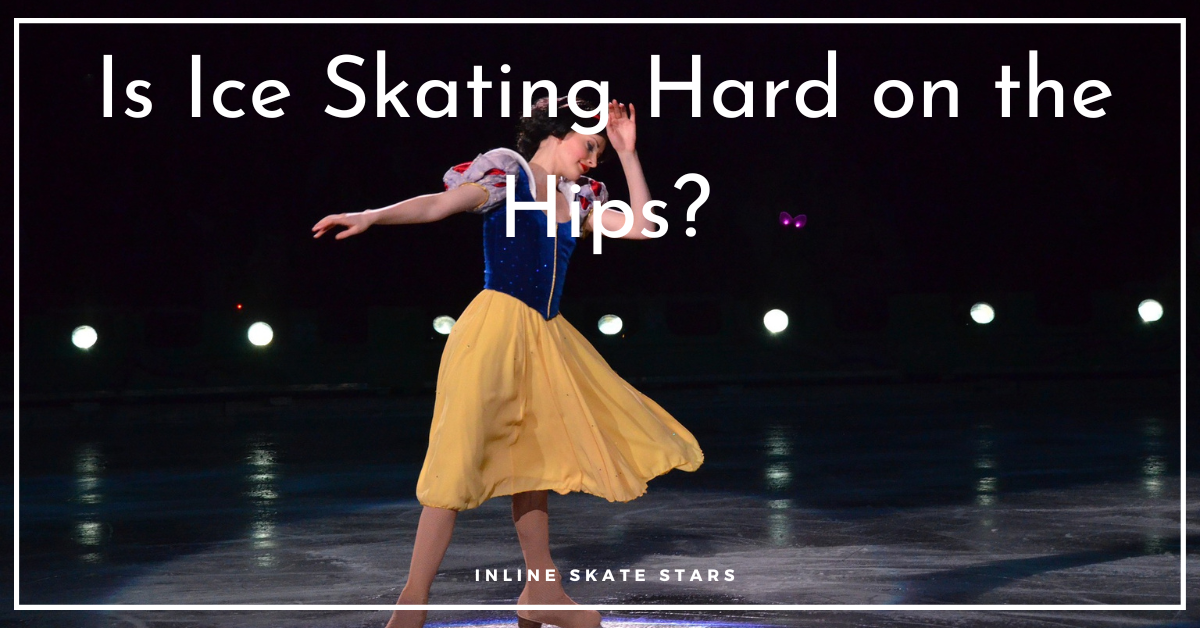If you’re a fan of ice skating, there’s no doubt that the sport can be tough on your hips.
Ice skaters use their hips and legs to move around on the ice, which can put a lot of strain on them over time.
There are several reasons why ice skating can be hard on the hips. Firstly, hip flexors help us lift our bodies off the ground.
These muscles do a lot of work when skating as the limbs rotate.
Secondly, skating often involves sudden changes in speed and direction, which put pressure on both hip flexors and quadriceps muscles.
Finally, ice skaters often expend a lot of energy in quick bursts. This can lead to muscle pain and fatigue in the hips.
If you’re concerned that ice skating might be hard on your hips, don’t worry.
There are plenty of ways to stay active while still enjoying the sport. I cover all of these tips in this guide.
So be sure to read it to the end if you’re looking for ways to ease hip pain while skating!
Is ice skating hard on the hips?
Is ice skating hard on the hips? Ice skating is hard on the hips since it’s physically demanding and can strain the hip flexor muscles due to overuse, collisions, or falls.
It’s also hard on the hips because of the sudden changes in speed and direction, putting pressure on the flexor muscles.
Eventually, this can cause adductor strain or arthritis in the hips complications.
Figure skaters and ice hockey players are often the most affected since these sports are more demanding.
I cover details in the rest of this guide. So, read on!
1. Ice skating strains the hip flexor muscles
Ice skating strains the hip flexor muscles. These muscles help us lift our bodies off the ground and rotate our limbs.
Skating can put a lot of pressure on these muscles, leading to pain and inflammation in the hip joint.
Stress fractures in hips are more common in figure skaters than in hockey players or runners.
There is a higher incidence of stress fractures (a type of injury where the bone fracturing manifests as swelling) in figure skaters due to their greater reliance on hip flexors during skating.
This increased strain causes them more pain and fatigue, often leading to fractures.
3. Sudden changes in speed and direction put pressure on flexor muscles
Sudden changes in speed and direction put a lot of pressure on the hip flexor muscles.
This is why figure skaters and ice hockey players are more prone to hip injuries.
When these muscles become overworked, they can start to fray or tear.
Ice skating is physically demanding and can cause muscles pain and fatigue
Ice skating is a physically demanding sport. This means that it can cause pain and fatigue in the muscles.
Over time, this can lead to problems such as hip muscles strain or arthritis.
Common hips injuries from ice skating
The two most common hip injuries from ice skating are hip adductor strain and arthritis hips.
Below I elaborate on them!
Hip adductor strain

Hip adductor strain or groin strain is a common injury in ice skaters.
It occurs when the hip adductors ( muscles that help lift the leg towards the body) are overworked.
This can happen when you change speed or direction or use too much force to rotate your hips.
A hip/groin strain injury is graded I-III based on the severity. Hip arthritis hips
- Grade 1 groin strain; this is the mildest type of hip injury.
- Grade 2 groin strain; this occurs when the muscle fibre tears partially or completely. It may cause a lot of pain and a limited range of motion.
- Grade 3 groin strain; this is the most severe form of a hip injury and can lead to a stress fracture in the bone.
Other hip adductor strain risk factors include;
- Being overweight or obese
- Having a weak hip adductor muscle
- Preexisting groin strain or injury
- Inactive lifestyle
The symptoms of an adductor strain include;
- Pain when you move your hip
- Sudden pain or discomfort when you do certain activities, such as going upstairs or getting out of a chair
- Limited range of motion in the hip joint
- Numbness or tingling in the area around the groin
Adductor strain treatment options
If you suffer from a hip adductor strain, you should first visit your doctor.
They will likely prescribe antibiotics to help shorten the duration of the injury and reduce inflammation.
If there is a stress fracture, surgery may be required. Quality rest also goes a long way!
Arthritis hips

Hip arthritis is when the joint between the hip bone and thighbone becomes inflamed, painless, and stiff.
Arthritis in the hips can develop gradually over many years or suddenly come on due to an ice skating injury or a change in your lifestyle.
The common types of hip arthritis include;
- Osteoarthritis
- Rheumatoid arthritis
- Psoriatic arthritis
- Post-traumatic hip arthritis
Osteoarthritis is the most common type of arthritis. It occurs when the cartilage that covers the hip joint starts to wear down and is replaced by bone.
Rheumatoid arthritis is a condition that causes inflammation all over your body, including your joints.
Psoriatic arthritis of the hip is a rare type of arthritis that affects the hip. It is caused by psoriasis, a skin condition.
Post-traumatic hip arthritis is a type of arthritis that can be caused by a hip injury, such as a fall or collision.
Hip arthritis symptoms include;
- Inflammation and pain around the hip joint
- Swelling of the leg
- Loss of mobility in the hip joint
- Tenderness on examination
Hip arthritis treatment options
If you have hip arthritis, your doctor or physical therapist may prescribe a pain reliever and an anti-inflammatory medication.
They might also recommend ice therapy as a treatment for pain and swelling.
You may need to take medication daily, depending on the type of arthritis you have.
How to ease hip pain while skating
There are a few ways you can ease hip pain while ice skating:
1. Wear proper skating gear
Ensure you wear the right equipment, such as skates that fit well and padding underneath your feet.
Read this guide on how to size ice skates to help you make an informed decision.
Wearing the wrong gear can cause additional tension on your hips, so make sure to find something comfortable.
2. Practice at a lower speed until you’re more confident in your skills
When starting, it’s helpful to practice at a slower pace before gradually working up to faster speeds.
This will help minimize the pressure on your hips and make it easier for you to glide across the ice.
3. Take breaks when necessary
If you start feeling pain in your hip, stop skating immediately and take a few minutes to rest.
This will allow the muscles in your hip joint time to relax and heal properly. If you experience hip pain while skating, talk to your doctor.
They can assess the extent of the problem and advise you on how to ease it.
Also Read: Is Ballet or Figure Skating Harder?




